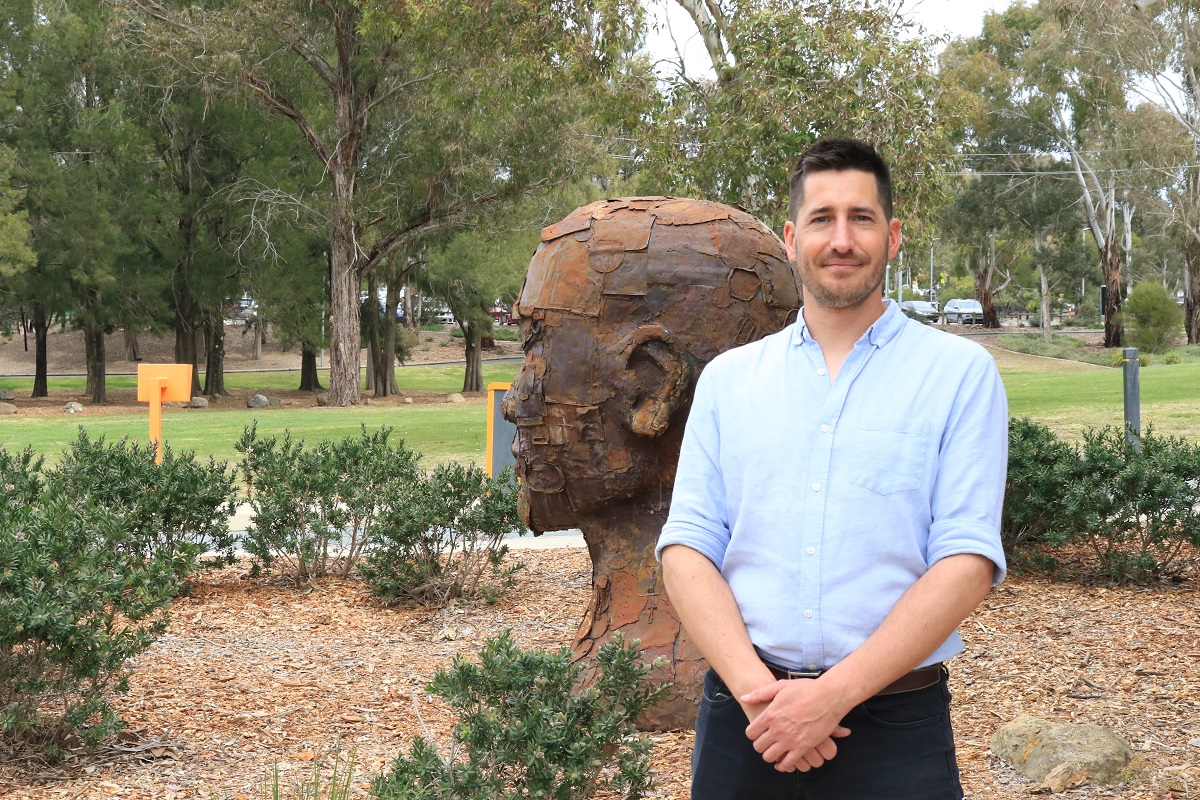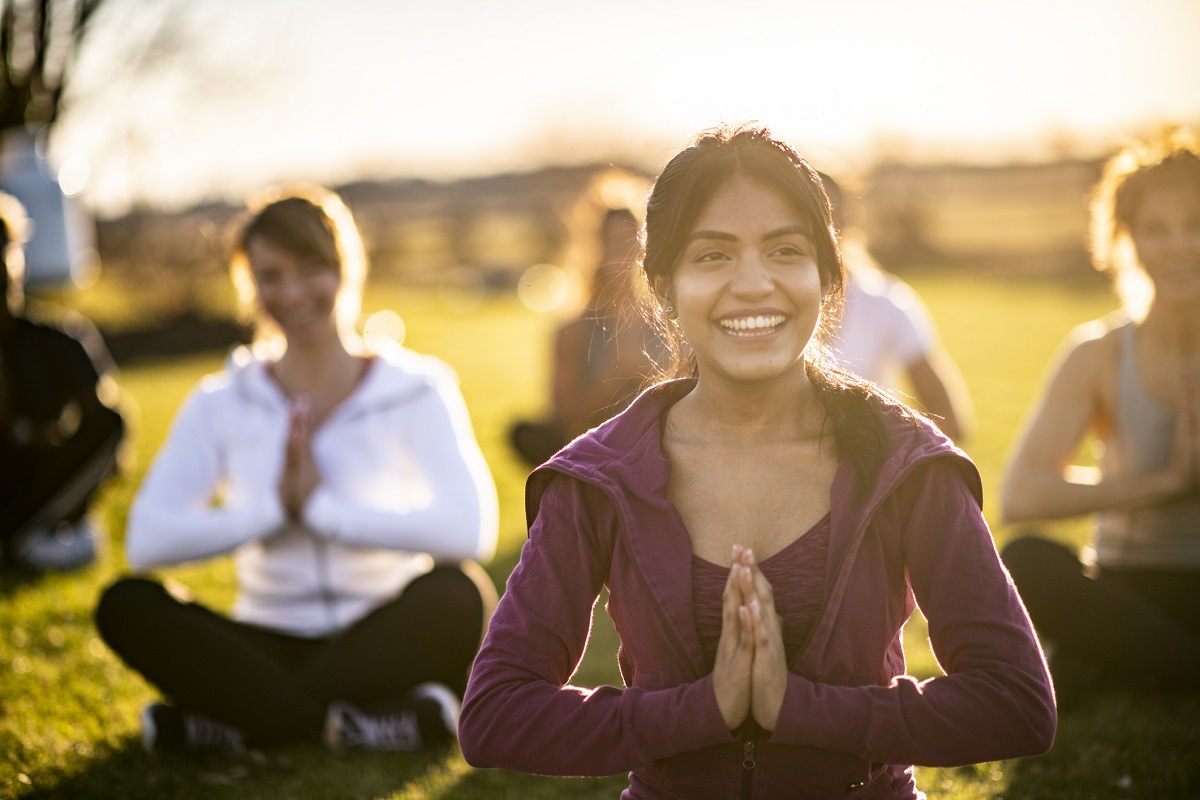Sport, Health & Wellbeing
STAYING STEADY: STRESS-BUSTING STRATEGIES
Pulling up a chair to start a conversation, asking a simple question, providing a listening ear – these are the things which can change a life.
Or save one.
We’re particularly reminded of this on R U OK? Day, this 10 September. It’s a national day of action, which highlights the importance of reaching out to someone who may be struggling, and the saving graces of a meaningful connection.
This year, we are all struggling just a little bit more – in some cases, a lot more.
Making and sustaining meaningful connections has never been more important than in a time when isolation can mean survival, and distancing is an act of love. But it can also be extra difficult to reach out to others if you are on shaky ground yourself, mentally or emotionally.
Helping someone else who may be struggling mentally and emotionally is often about having ‘staying’ power, says Steve Meyer, Psychologist at the University of Canberra’s Medical and Counselling Centre.

“It’s about staying steady in the conversation, staying compassionate and listening to the other person – while staying grounded and not folding into their stress at the same time,” he says.
It’s virtually impossible to control your own thoughts, Steve says – but the good news is that you can exert some control over your body. And because mind and body are so closely linked, they mutually affect each other.
Understanding this reciprocal relationship and the physiology of stress is a valuable foundation on which to build a stress-managing strategy, especially when you are dealing with chronic stress.
“Stress makes your body think you are at risk, in some kind of danger – so chronic stress can put you in prolonged ‘survival’ mode, so that you’re always operating on a level fuelled by stress and anxiety, adrenaline and cortisol,” Steve says. “Your body gets used to it, starts to think that’s the ‘normal’ level you need to operate at, and then resists attempts to move into a calmer level.
“At this point, blood flow in your brain is diverted from the prefrontal cortex – which handles complex cognitive behaviour, personality expression, decision making and moderating social behaviour – to the limbic system, which governs memory and emotion. This makes everyday tasks more difficult; it also causes a split in logic and emotions, so that we are more likely to make decisions based on how we feel.”
To centre the body – and help the mind and emotions to steadily follow suit – Steve suggests some easy-to-follow, practical steps.
Setting up the SEEDS pillars
Drawing on renowned American psychotherapist Dr John Arden’s SEEDS theory, Steve says there are five behaviours which form the pillars of good mental health, both now and in the future.
The SEEDS mnemonic stands for:-
Social connectivity – whether you’re an introvert or extrovert, some form of social connectivity needs to be fostered at all times. Benefits range from better mental health to a stronger immune system. And neglecting the need for connectivity can lead to increased risks of depression, anxiety, even physical illness and early-onset dementia.

Exercise: Our brains need our bodies to move, for a whole host of reasons – for one thing, movement-catalysed biochemical processes are what give birth to new neurons in the brain. A regular (daily) 30-minute aerobic boost is a huge mental health booster, and helps keep anxiety and depression at bay.
Education: It keeps brain connectivity constantly growing and expanding, so learning should be lifelong – and on a daily basis.
Diet: The body creates the chemicals that drive, power and run your brain from the food you eat – so a bad diet starves it of nutrients, and therefore affects its capacity to function, learn and grow positively. A healthy diet is fundamental to healthy brain function, and therefore mental and emotional health.
Sleep: Consider sleep to be a very important goal achieved by balancing a number of dynamics – because it can be affected by many factors. “Sleep hygiene is a set of steps to follow, so that you optimise your sleep,” Steve says. “This includes having set sleeping and waking times, avoiding studying or working in bed, and also avoiding screen time just prior to sleep. The best temperature range for sleep is between 18°C and 21°C, and you shouldn’t eat, drink or exercise too much close to your sleeping time.” Good sleep practices are crucial for both current and future mental and emotional health.

“The SEEDS mnemonic provides a structure to build on and maintain for good mental and emotional health,” Steve says.
“Most people know that these are things they should prioritise, but because stress causes that split between logic and emotion, it can be easy to lose sight of them.
“SEEDS also serves as a sort of litmus test which indicates when your mental health is affected, because things like sleep habits can also be affected. If you see a change in any of these which lasts longer than two weeks, you should get feedback from your GP, a psychologist or counsellor.”
Mindfulness practices
Mindfulness is about keeping yourself in the moment, without looking backwards or worrying about what’s ahead.
Meditation is probably the best-known practice that falls under this umbrella, and it’s an infinitely valuable practice. But there are also other small things you can do to bring order and calm to the chaos of stress, says Steve.

“Just putting in little transitions between work tasks, so that they don’t flow into each other, and between home and work spaces can be immediately helpful,” he says. For instance, having a shower, changing your clothes or simply washing your hands as soon as you get home from work (also great practices in a pandemic!). This is a signal to your body that a change of space – and pace – has occurred.
Body scanning is another useful practice, which often forms part of a meditation session.
“It involves checking in with your body, seeing what is happening with each body part,” Steve says. Start at the top of your head and work your way down to your toes, breathing evenly and paying attention to what is happening every step of the way.
Sensory grounding is another technique to situate yourself in the here and now. “Feel your feet on the floor, be aware of them as a steady anchor on a solid surface,” Steve says.
Immediate calm
While it’s great to build calming practices into your everyday lives and practise them long-term, you may encounter moments in which you need to calm yourself immediately.

“Controlled breathing is a useful technique that slows the heart rate, and that settles a lot of a person’s stress quickly – the mind is correspondingly grounded by the body and the blood flow allowed to return to the prefrontal cortex,” Steve says. He advocates counting to three while you breathe in, and breathing out for a count of five – the longer exhalation helps to slow your heartbeat.
“But it’s important to find the practice that works for you, as people with very high anxiety levels can find this technique triggering,” he adds.
Acknowledgement, choice and being predictable
“The first step to dealing with anything that is stressing us is to recognise and acknowledge it – to know stress for what it is,” Steve says. “Then just breathe evenly for five minutes, grounding yourself. Check in with your senses, expanding your awareness to your whole self.
“Visualise how you would like to see yourself deal with this situation. It’s about what you want to do, not how you want to feel or what you want to think – because these are the least controllable things.”
Finally, another trick to dispel stress – and one that overarches all these different strategies – is to introduce and maintain routine, consistency and predictability into your life. This is especially valuable when you are dealing with chronic stress.
“When you are stressed, you need to know what is coming next, so that the body can drop out of that adrenaline-fuelled survival mode,” Steve says.
“These practices to enable, facilitate and support good mental and emotional health are not set-and-forget ones – they can be the work of a lifetime.”
Nonetheless, they often seem easier over time, as they become incorporated into your day-to-day.
“It’s really about doing what you can, when you can, rather than adopting an all-or-nothing approach,” Steve says. “You need to do what feels right for you – if you can’t seem to get out of bed in the morning, wiggle your toes, or roll over. Do what you can – find the balance that works for you.”
Take care of yourself, so that you can better take care of others.
Words by Suzanne Lazaroo, photos: John Masiello